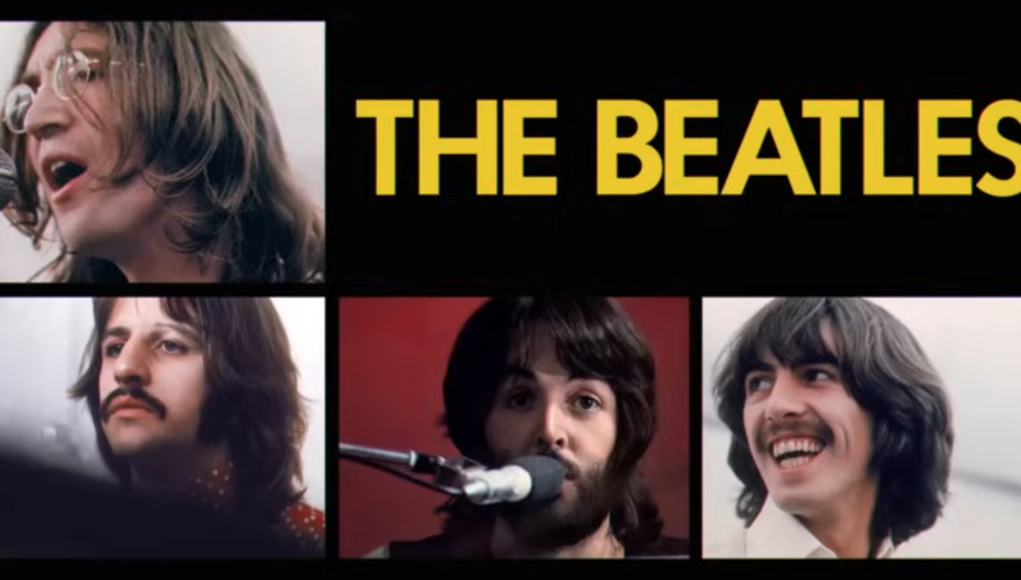By Adam Behr, Newcastle University
In one sense, Let It Be director Michael Lindsay-Hogg’s 1970 film documenting The Beatles’ recording sessions of January 1969, and their famous concert on the rooftop of the Apple building, could be viewed as something of a coda to the main event.
At the time, both the film and the accompanying album of the same name reached the public a month after the band’s break up was announced. In the present day, its rerelease follows Peter Jackson’s epic Get Back docuseries, which drew on the 60 hours of raw footage of the same sessions to provide a more complete account of the recordings.
So, why the fuss? Rereleases and remasters are a standard feature of both the film and music industries, and The Beatles’ media and commercial juggernaut has arguably led the way in this for a long time. First, there’s the sheer length of time since the film was last generally available – more than 50 years.
The answer also partly lies in the distinctive way in which, beyond their huge financial success, the narrative of The Beatles as a band has been woven into popular music and wider history. Peter Jackson’s 2020 series in many respects superseded Hogg’s film, providing a fuller picture of the sessions, which also fed into the Abbey Road album, the band’s last recording (even though Let It Be was released afterwards).
Same events, different perspectives
A highlight of both the film and series was the concluding rooftop concert, but Jackson’s programme was widely acknowledged for adding context to the band’s closing chapter. The hours of jamming and studio high-jinks revealed moments of camaraderie and a less rancorous atmosphere than had previously been thought.
So, beyond the events themselves, there’s an element of historiography at play here – a concern with how history is written and constructed. Since Let It Be’s original release, The Beatles have become an increasingly important aspect of popular music, and wider social history. Beyond the mystique acquired by inaccessibility for so long, the film gains interest as a document of how the band’s last days as an active unit were framed, and experienced, at the time.
In purely functional terms, it’s obviously easier to give a more complete account of the recording sessions in the nearly eight hours afforded by Peter Jackson’s Get Back than the one and a half hours available to Lindsay-Hogg on Let It Be.
Moments of discord appear in both, notably the famous encounter between a taciturn George Harrison – who walked out during the sessions – telling a cajoling Paul McCartney, about a guitar part: “I’ll play, you know, whatever you want me to play. Or I won’t play at all, if you don’t want me to play.”
These are diluted in the long stretch of Get Back, but become part of the central narrative of Let It Be. Filmmakers’ editorial decisions shape their stories, but are informed by their own contexts. Lindsay-Hogg was editing the film at a time when the band had just split, and trying to salvage a viable product from a somewhat chaotic process, since he’d originally been taken on to produce a television documentary and concert broadcast.
Re-tooling it as a film was a response to the band dropping the idea of a major event, the now legendary rooftop performance only emerging as a process of back and forth compromise.
Conversely, one of the iconic elements of Jackson’s Get Back series shows Paul McCartney coming up with the bare bones of the song of the same name more or less impromptu, and the pleasure in seeing how it develops. But that relies on the more leisurely pacing of the long form allowed by primary release on a streaming platform, as opposed to the editorial constraints of a cinema (or even television) release.
The streaming format was, of course, a long way off in the future when Lindsay-Hogg was working with the band. Jackson’s series also works more profoundly because of the classic status Get Back (the song) has accrued over half a century. For Lindsay-Hogg filming in 1969, it was just another jam – albeit by the world’s most famous band. In 2020, much of the audience was witnessing the genesis of a song they’d known their whole lives.
Framing popular music history
Get Back reviews the longitudinal process of a band at work, and one whose working processes had influenced many of the acts that followed in their wake. The Beatles’ success helped to shape the very idea of a band combining multiple songwriters and friends into a social, creative and business unit.
Their split was big news, and mattered in a way that the re-combinations of musicians into new working units had not done previously. Let It Be was tied into that historical moment, and the presence in the room of Lindsay-Hogg’s cameras helped to define it.
Viewed at the arrival of the 1970s, as the preeminent band of the 1960s announced their demise, Let It Be told the story of an ending, enhanced by the technical fact that it was blown up from a 16mm print, for TV, to 35mm for the cinema, adding a dark, grainy patina to the proceedings, now alleviated in the remastering process.
Now in 2024, it’s a document in a wider archive of Beatles lore and helps to inform the process of how the history of popular music is written.![]()
Adam Behr, Senior Lecturer in Popular and Contemporary Music, Newcastle University
This article is republished from The Conversation under a Creative Commons license. Read the original article.







